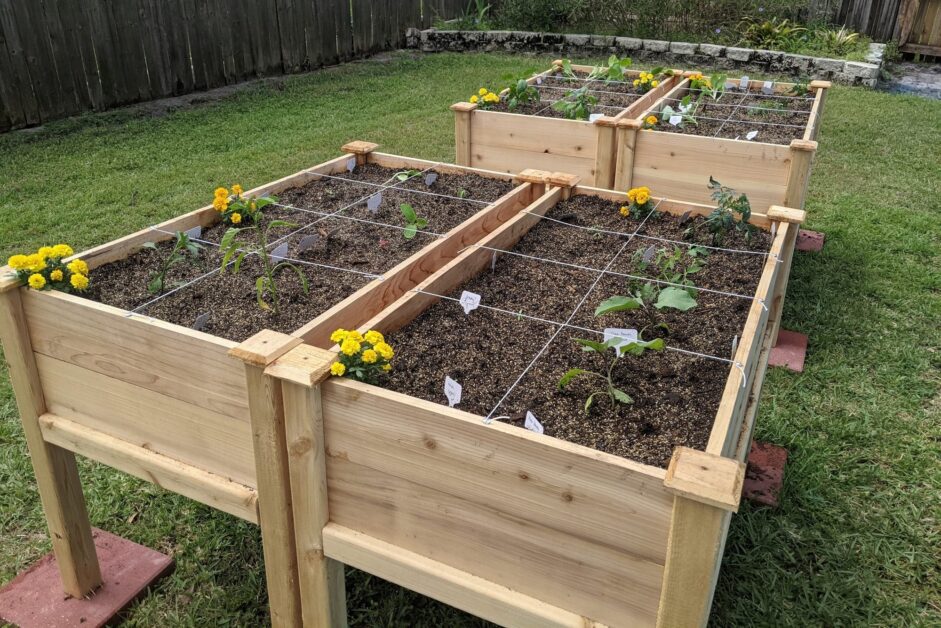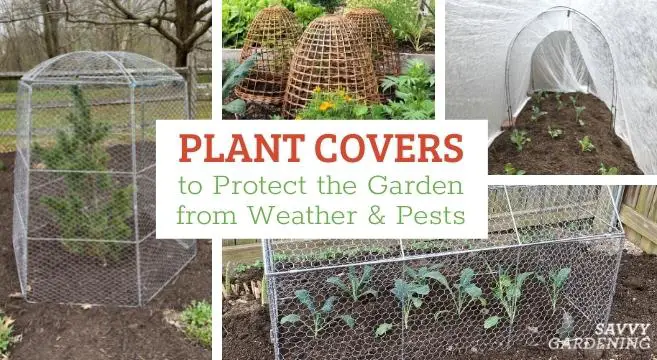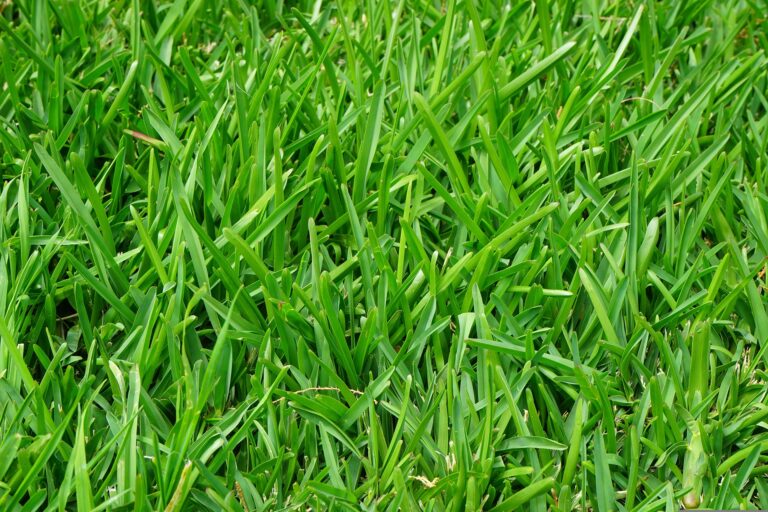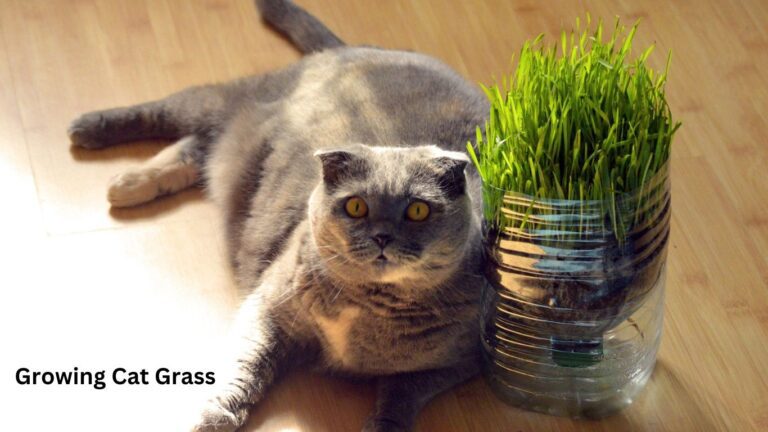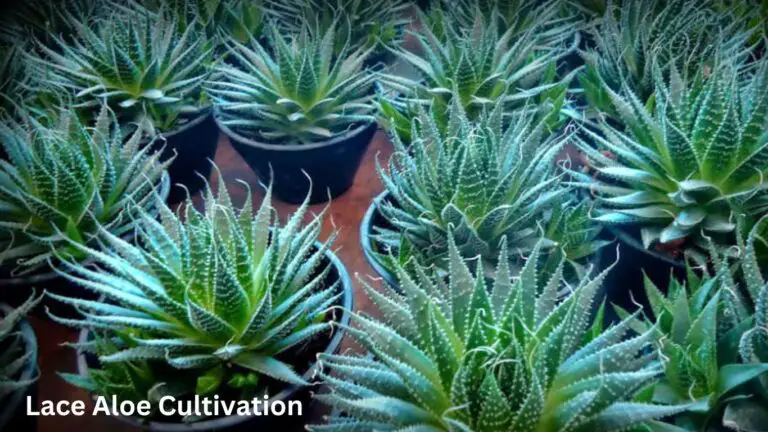How to Fill a Tall Raised Garden Bed Quickly and Easily
Table of Contents
Fast and Efficient: Filling Your Tall Raised Garden Bed
This is a great heading that communicates the key points effectively. It suggests that the content will provide quick and effective methods for filling a tall raised garden bed. To enhance it further, consider incorporating subheadings or bullet points within the content to outline specific steps, materials, or tips for achieving a speedy and efficient process. Additionally, you may want to include relevant keywords naturally throughout the content for better SEO.
Certainly! Here are some subheading suggestions to complement the main heading “Fast and Efficient: Filling Your Tall Raised Garden Bed”:
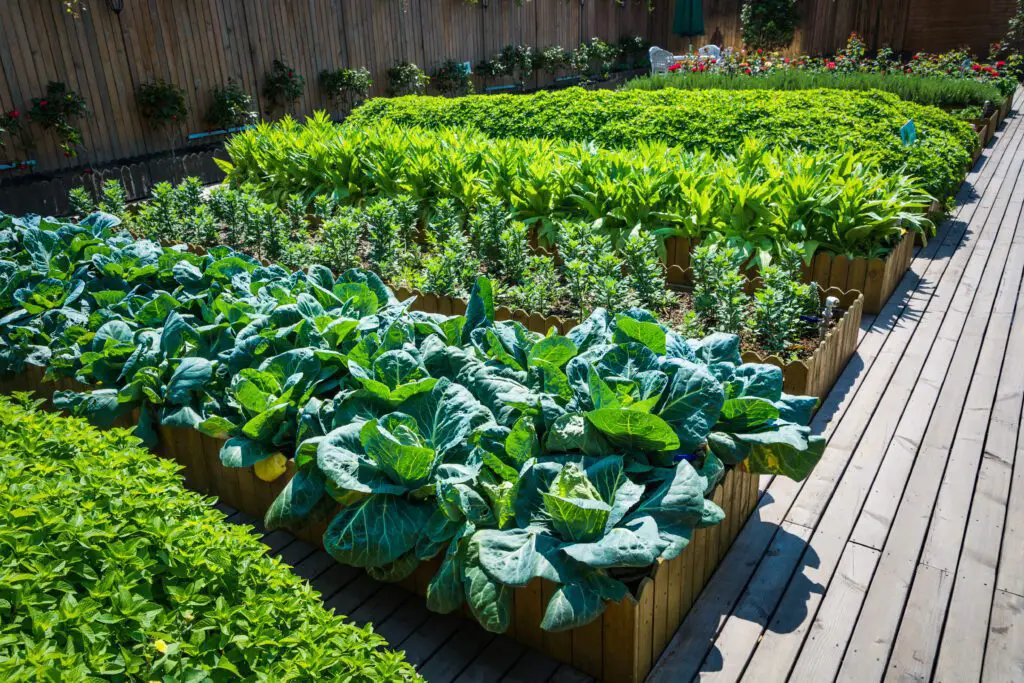
- Materials Needed for Quick Fill
- Exploring the essential components
- Time-saving tools and supplies
- Step-by-Step Guide to Speedy Filling
- Breaking down the process into manageable steps
- Pro tips for a swift execution
- Choosing the Right Soil Mix for Rapid Growth
- Optimal soil combinations for quick plant development
- Balancing nutrients for accelerated growth
- Streamlined Watering Techniques
- Efficient watering strategies for tall raised beds
- Automatic irrigation options for time savings
- Mulching for Moisture Retention and Weed Control
- Maximizing the benefits of mulch in tall raised gardens
- Suppressing weeds to save time and effort
- Quick Planting Strategies for Immediate Impact
- Selecting fast-growing plants for instant results
- Spacing and arrangement tips for optimal growth
- Time-Saving Maintenance Tips
- Minimal upkeep practices for a flourishing garden
- Routine checks to ensure continued efficiency
- Troubleshooting for a Smooth Process
- Addressing common challenges quickly
- Solutions to potential roadblocks in the filling process
- Enhancing Aesthetics with Speedy Design Ideas
- Creative ways to beautify your tall raised garden bed
- Quick design tips for visual appeal
- Success Stories: Rapid Results from Efficient Filling
- Showcasing real-life examples of fast and efficient tall raised bed gardens
- Testimonials and experiences from successful gardeners
Remember to tailor these subheadings to match the specific content you plan to include in each section. Providing valuable information and actionable tips will keep your readers engaged and satisfied.
Quick Tips for Filling Tall-Raised Garden Beds
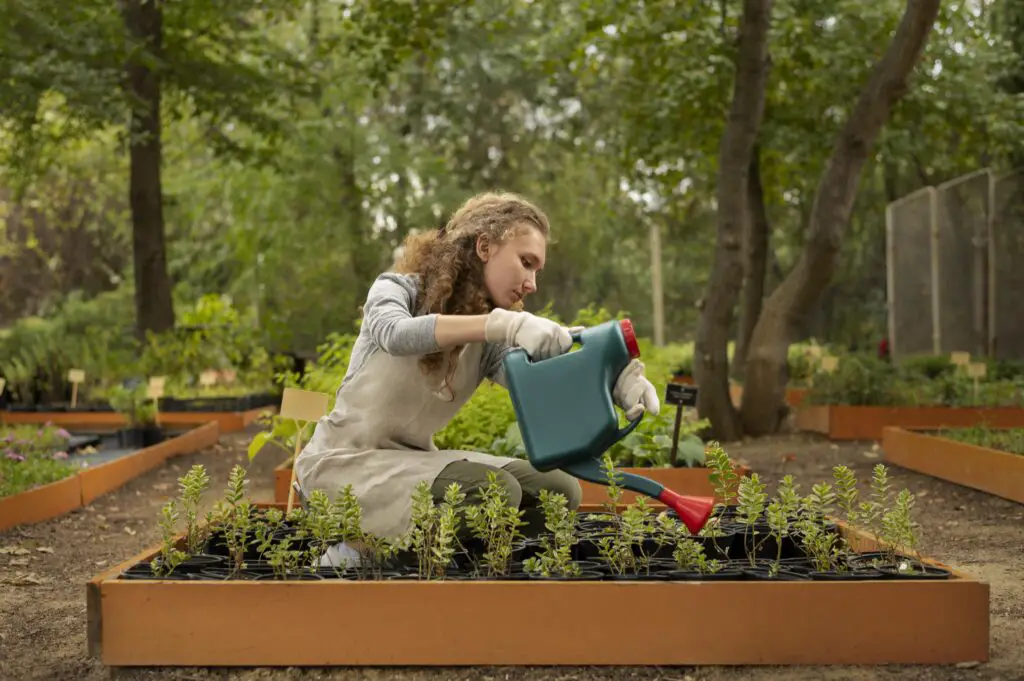
- Monitor and Adjust:
- Regularly check soil moisture and adjust watering accordingly.
- Keep an eye on plant health for early issue detection.
- Vertical Gardening Tactics:
- Utilize vertical space with trellises or hanging containers.
- Grow vining plants to maximize vertical growth.
- Quick-Start Composting:
- Begin composting early to have nutrient-rich compost available.
- Utilize compost tea for a fast-acting liquid fertilizer.
- Weather-Wise Gardening:
- Plan your filling process based on favorable weather conditions.
- Consider covering the bed during extreme weather for protection.
- Plan for Succession Planting:
- Plan for successive plantings to maximize productivity.
- Replace harvested crops promptly with new ones.
- Document and Learn:
- Keep a gardening journal to track what works efficiently.
- Learn from each season to optimize future fillings.
These quick tips offer actionable advice for filling tall raised garden beds efficiently. Tailor them to suit your specific needs and preferences while maintaining a focus on time-saving strategies.
Easy Steps to Fill a Tall Raised Garden Bed in No Time
- Prep Your Space: Clear the area and ensure a level surface for the bed.
- Select Quality Soil: Choose a nutrient-rich, well-draining soil mix.
- Layer for Success: Strategically layer materials for optimal growth.
- Bulk Purchase Essentials: Save time and money by buying soil and amendments in bulk.
- Efficient Assembly: Pre-cut materials and enlist help for a quick setup.
- Drip Irrigation Setup: Install a drip system for consistent and time-saving watering.
- Mulch for Moisture Retention: Apply a generous layer of mulch to retain soil moisture.
- Quick Planting Techniques: Opt for established seedlings and plan efficient spacing.
- Boost with Nutrients: Incorporate organic fertilizers or compost for plant health.
- Time-Saving Maintenance: Establish a simple and regular maintenance routine.
Follow these easy steps to have your tall raised garden bed ready in no time, allowing you to enjoy the benefits of efficient gardening.
Time-Saving Techniques for Filling Tall-Raised Beds
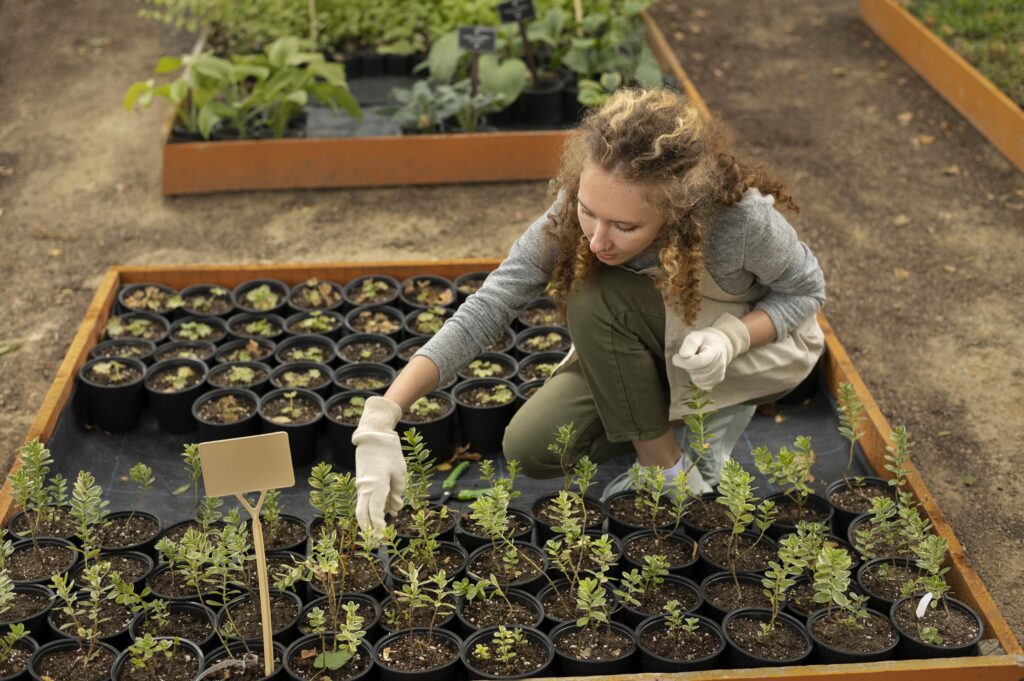
- Strategic Soil Selection:
- Choose a high-quality, pre-mixed soil for quick use.
- Smart Layering:
- Optimize material placement for efficiency.
- Bulk Material Purchase:
- Save time by buying soil and amendments in bulk.
- Pre-Assembly Preparation:
- Pre-cut materials and organize for swift bed construction.
- Drip Irrigation Installation:
- Install a drip system for efficient and uniform watering.
- Mulching Mastery:
- Apply mulch generously to reduce watering frequency.
- Plug-and-Play Planting:
- Use established seedlings for instant impact.
- Fast-Acting Nutrient Boost:
- Incorporate quick-release fertilizers or compost.
- Low-Maintenance Design:
- Plan for easy upkeep with minimal effort.
- Continuous Monitoring:
- Use time-saving tools to monitor soil and plant health.
Implement these time-saving techniques to streamline the process of filling tall raised beds, allowing you to enjoy a productive garden with minimal effort.
Effortless Gardening: Speedy Tall Raised Bed Setup

- Clear and Level Ground:
- Begin with a clean and level surface for the bed.
- Prep Efficient Materials:
- Pre-cut and organize materials for a quick setup.
- Swift Assembly Techniques:
- Utilize efficient assembly methods for speed.
- Teamwork for Efficiency:
- Enlist help for a faster and smoother installation.
- Drip Irrigation Integration:
- Incorporate a drip system for time-saving watering.
- Mulch for Easy Maintenance:
- Apply mulch generously for reduced upkeep.
- Strategic Plant Placement:
- Plan the layout for optimal use of space.
- Instant Impact with Seedlings:
- Opt for established seedlings for immediate beauty.
- Nutrient-Rich Soil Mix:
- Choose a quality pre-mixed soil for quick use.
- Effortless Upkeep Plan:
- Design a low-maintenance routine for easy gardening.
With these tips, transform the setup of your tall raised bed into an effortless process, allowing you to enjoy your garden sooner with minimal effort.
Rapid Garden Bed Fill: A Step-by-Step Guide
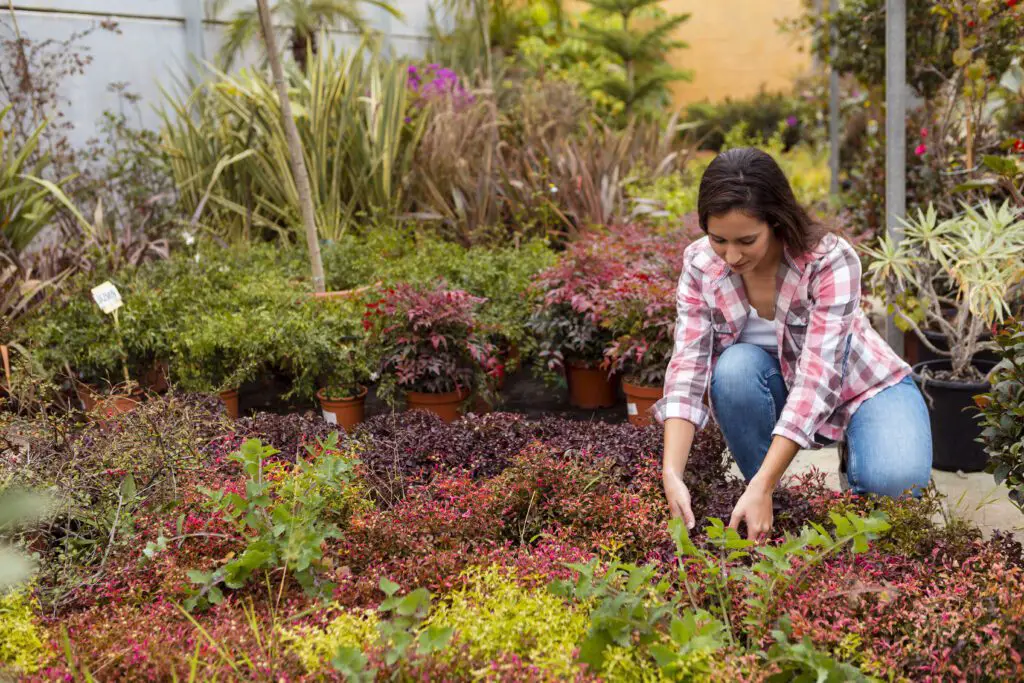
- Prepare the Space:
- Clear the area and ensure a level foundation for the bed.
- Gather Materials:
- Collect soil, compost, and amendments for efficient use.
- Layering Strategy:
- Implement a strategic layering approach for optimal growth.
- Bulk Material Placement:
- Save time by placing bulk materials efficiently.
- Quick Assembly Techniques:
- Utilize pre-cut materials for a swift and precise setup.
- Install Drip Irrigation:
- Incorporate a drip system to streamline watering.
- Mulch for Moisture Retention:
- Apply a generous layer of mulch for water conservation.
- Planting Efficiency:
- Opt for established seedlings and plan for quick growth.
- Nutrient Boost:
- Integrate fertilizers or compost for rapid plant nourishment.
- Low-Maintenance Design:
- Plan for easy upkeep with minimal time investment.
Follow this step-by-step guide for a rapid garden bed fill, ensuring a quick and successful setup for your tall raised bed.
Smart Strategies for Swift Tall Raised Bed Filling
- Precise Site Preparation:
- Clear and level the area to ensure a smooth foundation.
- Strategic Material Selection:
- Choose pre-mixed, quality soil for efficient use.
- Layering Mastery:
- Employ a strategic layering technique for optimal results.
- Bulk Material Placement:
- Speed up the process by efficiently placing bulk materials.
- Efficient Assembly Techniques:
- Utilize pre-cut materials and smart assembly methods.
- Drip Irrigation Integration:
- Incorporate a drip system for efficient and uniform watering.
- Mulch for Water Conservation:
- Apply mulch generously to retain soil moisture.
- Quick Planting Approaches:
- Opt for established seedlings for immediate impact.
- Nutrient-Enriched Soil Mix:
- Choose a soil mix with added nutrients for rapid growth.
- Low-Maintenance Design:
- Plan for easy upkeep with minimal ongoing effort.
Implement these smart strategies for a swift and successful filling of your tall raised bed, making gardening efficient and enjoyable.
DIY Gardening Hacks: Fill Your Tall Raised Bed with Ease
- Elevate with Cinder Blocks:
- Use cinder blocks for quick and sturdy raised bed walls.
- Cardboard Weed Barrier:
- Lay cardboard at the bed’s base to suppress weeds effortlessly.
- Layered Fill Technique:
- Optimize nutrient distribution with a strategic layering approach.
- Bulk Soil Delivery:
- Save time by ordering soil in bulk for swift delivery.
- Pallet Board Assembly:
- Repurpose pallet boards for a simple and cost-effective bed frame.
- Drip Irrigation DIY:
- Create a custom drip irrigation system for efficient watering.
- Mulch Mound Technique:
- Build a mulch mound for moisture retention and easy maintenance.
- Seed Tape Precision:
- Make your own seed tape for precise and quick planting.
- Compost Sock Enhancement:
- Utilize compost socks for continuous nutrient release.
- Vertical Planting Solutions:
- Save space with vertical planting pockets for additional crops.
Explore these DIY gardening hacks to fill your tall raised bed effortlessly, combining creativity with practical solutions for a successful gardening experience.
Speedy Solutions: Filling Your Tall Raised Garden in Minutes
- Ready-Mix Soil Solutions:
- Opt for pre-mixed soil blends for quick and easy filling.
- Instant Bed Frame Options:
- Explore pre-built or easily assembled bed frame alternatives.
- Bulk Material Placement Techniques:
- Speed up the process with efficient placement of bulk materials.
- Teamwork for Swift Assembly:
- Enlist helps for a faster and more streamlined bed setup.
- Precise Drip Irrigation Installation:
- Install a drip system with precision for rapid watering.
- Mulch Mats for Instant Moisture Retention:
- Lay down mulch mats for quick moisture conservation.
- Plug-and-Play Planting Solutions:
- Use established seedlings for immediate impact.
- Nutrient-Rich Soil Mix Options:
- Choose soil mixes with added nutrients for rapid growth.
- Low-Maintenance Design Concepts:
- Incorporate design elements that require minimal upkeep.
- Efficient Monitoring Tools:
- Use time-saving tools for quick and accurate garden monitoring.
With these speedy solutions, you can fill your tall raised garden bed in minutes, ensuring a hassle-free and efficient gardening experience.
Streamlined Process: Filling a Tall Raised Garden Bed Quickly
- Efficient Site Preparation:
- Begin with a clean and level surface for optimal bed placement.
- Smart Material Selection:
- Choose pre-mixed, nutrient-rich soil for quick use.
- Strategic Layering Techniques:
- Employ a layered approach for efficient nutrient distribution.
- Bulk Material Placement:
- Save time by placing bulk materials with precision.
- Swift Assembly Methods:
- Utilize pre-cut materials and efficient assembly techniques.
- Drip Irrigation Integration:
- Incorporate a drip system for uniform and rapid watering.
- Mulch for Moisture Management:
- Apply a generous layer of mulch for water retention.
- Quick Planting Strategies:
- Opt for established seedlings for immediate impact.
- Nutrient-Enriched Soil Mix:
- Choose a soil mix with added nutrients for fast growth.
- Low-Maintenance Design:
- Plan for easy upkeep with minimal ongoing effort.
This streamlined process ensures a quick and successful filling of your tall raised garden bed, making gardening a seamless and time-efficient activity.
Understanding the Benefits of a Tall-Raised Garden Bed
A tall raised garden bed offers numerous benefits for gardening enthusiasts. One advantage is the convenience of easy access and reduced strain on the gardener’s back and knees. With the increased height, gardeners can comfortably tend to their plants without the need to bend over or kneel for extended periods. This is particularly beneficial for individuals with physical limitations or older gardeners who may have difficulty with traditional gardening methods. Additionally, this raised design provides a natural barrier against common garden pests such as rabbits, slugs, and snails, ensuring that plants are protected and thrive.
Another benefit of a tall raised garden bed is its enhanced drainage capabilities. The elevated structure allows excess water to drain freely, preventing issues like waterlogging and root rot. This is especially advantageous in areas with heavy rainfall or clayey soils that are prone to water retention. Proper drainage promotes healthy root development and reduces the risk of plant diseases caused by excessive moisture. Moreover, the elevated height of the garden bed facilitates better air circulation around the plants, minimizing the chances of fungal infections and providing optimal conditions for growth. Overall, a tall raised garden bed offers both practicality and improved plant health, making it a wise choice for gardening enthusiasts.
Selecting the Right Location for Your Tall Raised Garden Bed
When selecting the right location for your tall raised garden bed, there are several factors to consider to optimize the success of your gardening efforts. Firstly, it is important to choose a spot that receives ample sunlight throughout the day. Most vegetables and flowers require at least six to eight hours of direct sunlight to thrive and produce optimal yields. Consider the angle of the sun throughout the day and assess any potential obstructions, such as trees or buildings, that may cast shade on your garden bed.
In addition to sunlight, it is crucial to select a location with good air circulation. Proper air circulation helps prevent the buildup of moisture and reduces the risk of disease and fungal infestations. Avoid placing your tall raised garden bed in areas that are prone to strong winds, as this can damage fragile plants and disturb their root systems. Furthermore, ensure that the surrounding area is free from debris or objects that could restrict air movement. By carefully considering these factors, you can provide an environment that promotes healthy plant growth and maximum productivity in your tall raised garden bed.
• Choose a spot that receives ample sunlight throughout the day
• Most vegetables and flowers require at least six to eight hours of direct sunlight
• Consider the angle of the sun throughout the day and assess potential obstructions such as trees or buildings
• Select a location with good air circulation to prevent moisture buildup and reduce the risk of disease and fungal infestations
• Avoid placing your garden bed in areas prone to strong winds, as this can damage plants and disturb root systems
• Ensure the surrounding area is free from debris or objects that could restrict air movement
Choosing the Ideal Materials for Filling Your Tall Raised Garden Bed
When it comes to filling your tall raised garden bed, selecting the right materials is crucial for the success of your plants. The ideal materials should not only provide a suitable growing environment but also promote proper drainage and prevent waterlogging. One popular choice for filling raised beds is a blend of topsoil, compost, and peat moss. This mixture provides a balanced nutrient profile, excellent water retention, and good aeration for the roots to thrive. Additionally, adding sand or perlite to the mix can further enhance its drainage capabilities, ensuring that excess moisture doesn’t accumulate and becomes detrimental to the plant’s health.
Another option for filling your tall raised garden bed is using a soilless mix, such as a blend of coconut coir, vermiculite, and perlite. Soilless mixes offer several advantages, including being lightweight, sterile, and free from pests and diseases commonly found in garden soil. They also provide excellent drainage and moisture retention properties, allowing the roots to access oxygen easily. Consequently, soilless mixes can be an excellent choice if you have limited access to quality garden soil or are concerned about soil-borne pests and diseases. However, it’s important to note that soilless mixes may require additional fertilization throughout the growing season, as they don’t have the same inherent nutrient content as garden soil.
Choosing the right materials to fill your tall raised garden bed is a critical step toward creating an optimal growing environment for your plants. By considering factors such as water retention, drainage, and nutrient availability, you can create a healthy and thriving garden that yields bountiful harvests. Whether you opt for a blend of topsoil, compost, and peat moss or prefer a soilless mix, each option has its unique benefits. Whichever materials you choose, remember to prioritize the needs of your plants and provide them with the best-growing medium possible.
Preparing the Base of Your Tall Raised Garden Bed
Preparing the Base of Your Tall Raised Garden Bed is a crucial step in ensuring the stability and longevity of your garden. The base serves as the foundation that supports the weight of the soil, plants, and any additional structures you may add to your raised bed. To start, clear the area where you plan to place your bed, ensuring it is free from any debris or vegetation. This will create a clean and level surface for your garden bed.
Next, it is important to lay a barrier between the ground and your raised bed. This barrier helps prevent weeds and grass from infiltrating your garden while also providing some protection against pests. You can use landscape fabric or heavy-duty cardboard as effective options for this purpose. Ensure that the barrier extends beyond the perimeter of your bed to provide complete coverage.
Once the barrier is in place, you can construct the base of your tall raised garden bed. Some gardeners opt for a wooden frame, while others prefer using bricks or cinder blocks. Whichever material you choose, make sure it is sturdy and durable to withstand the weight of the soil. Additionally, ensure that the corners of the frame are tightly secured to maintain the structural integrity of your raised bed.
By diligently preparing the base of your tall raised garden bed, you are setting the stage for a thriving garden. Following these steps will provide a solid foundation, keeping your plants and soil secure and allowing them to flourish. Now that the base is prepared, you can move on to the exciting task of filling your raised bed with the ideal soil mixture to provide optimal growing conditions for your plants.
Ensuring Proper Drainage in Your Tall Raised Garden Bed
Proper drainage is a crucial factor in maintaining the health and productivity of your tall raised garden bed. Without it, excess water can accumulate in the bed, causing root rot, disease, and even plant death. To ensure proper drainage, there are several key steps you can take.
Firstly, when constructing your tall raised garden bed, consider adding drainage holes or slits along the bottom. These openings will allow excess water to escape, preventing waterlogged soil. Additionally, you can place a layer of coarse gravel or small rocks at the bottom of the bed to create a drainage layer. This will further promote water movement and prevent any potential blockage.
Furthermore, selecting the right soil mix can greatly contribute to proper drainage. Opt for a well-draining soil that is a good balance of organic matter, sand, and loam. This will facilitate water movement while still retaining the necessary moisture for plant growth. Additionally, incorporating perlite or vermiculite into your soil mix can enhance drainage capacity by improving soil structure and aeration.
By implementing these measures, you will ensure that your tall raised garden bed has adequate drainage. This will provide the optimal growing conditions for your plants, promoting healthy root development and overall success in your gardening endeavors.
Exploring Different Soil Mixes for Filling Your Tall Raised Garden Bed
To ensure the success of your tall raised garden bed, it is crucial to explore different soil mixes that are ideal for filling it. The right soil mix can provide optimal nutrition and support for your plants, ensuring healthy growth and abundant yields. When selecting a soil mix, it is important to consider factors such as nutrient content, drainage capabilities, and moisture retention.
One popular option for filling tall raised garden beds is a blend of garden soil, compost, and sand. This mixture provides a balanced combination of nutrients, organic matter, and improved drainage. The garden soil serves as a base, providing essential minerals and a stable structure for the roots to anchor in. Compost enriches the soil with organic matter, improves its water-holding capacity, and boosts microbial activity. Adding sand to the mix enhances drainage, preventing waterlogging and ensuring adequate aeration for the roots. This blend allows for healthy root development and efficient nutrient absorption, resulting in thriving plants.
Incorporating Compost for Nutrient-Rich Soil in Your Tall-Raised Garden Bed
Incorporating compost into your tall raised garden bed is a crucial step in creating nutrient-rich soil that will support the growth and health of your plants. Compost is a valuable organic matter that provides essential nutrients, improves soil structure, and enhances microbial activity in the garden bed. It also helps retain moisture, suppresses weeds, and reduces the need for chemical fertilizers.
To incorporate compost into your tall raised garden bed, begin by spreading a layer of compost over the top of the soil. Aim for a thickness of about 2-3 inches, ensuring it is evenly distributed. You can use a rake or garden fork to gently work the compost into the top few inches of the soil. This will help to mix the compost with the existing soil, allowing the nutrients to be readily available to your plants’ roots. Additionally, mixing the compost into the soil will help improve its water-holding capacity and enhance drainage, promoting optimal growing conditions for your plants.
There are various types of compost available, including homemade compost, commercially produced compost, and composted manure. Each type has its own benefits, so choose the one that suits your needs and preferences. Homemade compost allows you to control the ingredients and ensure its quality, while commercially produced compost may have been carefully formulated to provide a balanced mixture of nutrients. Composted manure, on the other hand, is rich in nitrogen and can be particularly beneficial for vegetable gardens.
Remember, the quality of your compost will greatly influence the overall health and productivity of your tall raised garden bed. Aim to use compost that has been properly decomposed and is free from weed seeds and pathogens. By incorporating nutrient-rich compost into your tall raised garden bed, you are providing your plants with a fertile environment that will support their growth and enable you to enjoy bountiful harvests.
Adding Organic Matter to Improve Soil Structure in Your Tall-Raised Garden Bed
Adding organic matter to your tall raised garden bed is a vital step in improving the soil structure and promoting optimal plant growth. Organic matter refers to any material that comes from plant or animal sources and is in various stages of decomposition. When incorporated into the soil, organic matter enhances its fertility and helps create a favorable environment for plant roots.
One of the primary benefits of adding organic matter is its ability to improve soil structure. Organic matter acts as a binder, holding soil particles together and creating aggregates. These aggregates help create pore spaces in the soil, allowing for better drainage and root penetration. Additionally, organic matter helps loosen compacted soil, improving its aeration and water-holding capacity. As a result, plants can access nutrients and water more easily, leading to healthier growth and increased yields.
To effectively incorporate organic matter into your tall raised garden bed, you can use a variety of materials such as compost, well-rotted manure, leaf mold, or straw. Compost is an excellent option as it provides a balanced range of nutrients and microorganisms essential for plant health. Simply mix the organic matter into the top layer of soil, ensuring an even distribution throughout the bed. Depending on the condition of your soil, you may need to add organic matter annually or as needed to maintain soil fertility and structure.
Considering Amendments to Optimize Soil pH in Your Tall-Raised Garden Bed
A crucial factor in the success of your tall raised garden bed is maintaining the optimal pH level of the soil. The pH level refers to the degree of acidity or alkalinity in the soil, and different plants thrive in different pH conditions. Thus, considering amendments to optimize soil pH is essential for creating a thriving garden.
To determine the pH level of your soil, you can conduct a soil test using a home testing kit or send a sample to a local agricultural extension service. The results will guide you in identifying the necessary amendments for your tall raised garden bed. If the pH is too low (acidic), you can incorporate amendments such as lime, wood ash, or crushed eggshells to raise it. Conversely, if the pH is too high (alkaline), you can add amendments like elemental sulfur, peat moss, or pine needles to lower it. This adjustment will provide an optimal environment for nutrient absorption and promote healthy plant growth.
Maintaining the appropriate pH level in your tall raised garden bed ensures that essential nutrients are readily available to your plants. When the pH is not balanced, some nutrients become less soluble and, consequently, less accessible to plants, even if they are present in the soil. By optimizing the soil pH, you create conditions that allow plants to absorb nutrients efficiently, leading to healthier growth, increased yields, and vibrant blooms in your garden.
By carefully considering amendments to optimize soil pH in your tall raised garden bed, you are taking a proactive approach to creating an environment that supports the specific needs of your plants. When you invest the time and effort to ensure proper pH levels, your plants will thrive, rewarding you with bountiful harvests and a visually appealing garden. So, let’s delve further into the various amendments and techniques that can help you achieve the ideal pH conditions for your tall raised garden bed.
Calculating the Amount of Soil Needed to Fill Your Tall Raised Garden Bed
Calculating the Amount of Soil Needed to Fill Your Tall Raised Garden Bed
Determining the exact amount of soil required to fill your tall raised garden bed is crucial for ensuring optimal growing conditions for your plants. By accurately calculating this quantity, you can avoid wasting excess soil or falling short, both of which can hinder the success of your gardening endeavors. To help you with this task, let’s delve into some simple yet effective methods that will enable you to calculate the amount of soil needed precisely.
Firstly, it is essential to measure the length, width, and height of your tall raised garden bed. Be meticulous and ensure your measurements are accurate, as even a slight error can lead to significant discrepancies in the final soil quantity. Once you have these measurements, multiply the length, width, and height together to determine the volume of your garden bed. For instance, if your garden bed is 4 feet long, 2.5 feet wide, and 1.5 feet high, the volume would be 15 cubic feet.
Now comes the conversion from cubic feet to the desired unit of measure. The most commonly used unit for soil quantity is cubic yards, as it is easier to work with for larger garden beds. To convert cubic feet to cubic yards, divide the volume of your tall raised garden bed by 27. In our example, dividing 15 cubic feet by 27 would yield approximately 0.56 cubic yards. This means you would require approximately 0.56 cubic yards of soil to fill your tall raised garden bed adequately.
So there you have it, a simple and straightforward method for calculating the amount of soil needed to fill your tall raised garden bed. By following these steps, you can ensure that you have the right quantity of soil to create an optimal growing environment for your plants.
Efficiently Filling Your Tall Raised Garden Bed with Soil
Efficiently filling your tall raised garden bed with soil is a crucial step in creating an optimal growing environment for your plants. When it comes to selecting the right soil for your bed, it’s important to choose a high-quality mixture that promotes healthy root development and nutrient uptake.
One important factor to consider when filling your tall raised garden bed is the composition of the soil. A well-balanced blend of organic matter, such as compost or aged manure, along with loamy soil will provide a nutrient-rich foundation for your plants. This combination will not only ensure proper drainage but also support aeration and moisture retention, all vital for optimal plant growth.
To efficiently fill your tall raised garden bed with soil, it’s recommended to layer the materials systematically. Start by placing a layer of gravel or rocks at the bottom to facilitate drainage. Next, add a mixture of soil and compost, making sure to evenly distribute it throughout the bed. Repeat this process until the desired height is reached. By layering the soil mix in this manner, you create a well-structured and optimal environment for your plants to thrive. It’s also advisable to regularly monitor the moisture levels in your bed and make adjustments as needed to prevent waterlogging or drying out.
In conclusion, efficiently filling your tall raised garden bed with soil requires careful consideration of the soil composition and layering technique. By selecting the appropriate soil blend and utilizing a systematic approach, you can create an ideal growing environment for your plants. Stay tuned for further sections of this article for more valuable insights on maintaining and caring for your tall raised garden bed.
Watering Strategies for Newly Filled Tall Raised Garden Beds
Watering strategies are crucial for the success of your newly filled tall raised garden beds. Proper watering ensures that your plants receive the necessary amount of moisture, promoting healthy growth and vibrant blooms. However, it’s important to strike the right balance and avoid over or under-watering, both of which can harm your plants.
When it comes to watering tall raised garden beds, the key is to provide a deep and thorough soak. This encourages the roots to reach down into the soil, promoting stronger and more resilient plants. One effective method is to use a drip irrigation system, which delivers water directly to the base of the plants. This not only conserves water but also prevents overwatering and minimizes the risk of fungal diseases. Alternatively, you can water manually using a soaker hose or watering can, ensuring that the water reaches the root zone of the plants. Keep in mind that the frequency of watering will depend on various factors such as weather conditions, plant types, and soil composition. Regularly monitor the moisture levels by checking the soil’s dryness with your finger or using a moisture meter.
Mulching Techniques to Conserve Moisture in Your Tall Raised Garden Bed
Mulching is a crucial aspect of gardening that plays a significant role in conserving moisture in your tall raised garden bed. By using mulch, you can protect your plants from excessive evaporation and prevent weed growth, thereby promoting optimal water retention in the soil. One of the most effective mulching techniques is to apply a layer of organic material, such as straw, wood chips, or compost, around your plants. This not only helps to retain soil moisture but also adds nutrients to the soil as the organic matter breaks down over time.
Additionally, using a dark-colored mulch can further enhance moisture conservation in your tall raised garden bed. Dark-colored mulches, such as black plastic or rubber mulch, absorb more sunlight and heat, which helps to warm the soil and reduce water loss through evaporation. This method is particularly useful in cooler climates or during the early spring season when the soil may need an extra boost to reach optimal temperatures for plant growth.
Remember, proper mulching techniques require attention to detail. Ensure that you apply the mulch layer evenly and avoid direct contact with the stems of your plants to prevent rot or disease. Regularly monitor the moisture levels in your tall raised garden bed and adjust the mulch thickness accordingly. By incorporating these mulching techniques into your gardening practices, you can optimize water conservation and create a healthy environment for your plants to thrive.
Maintaining and Caring for Your Tall Raised Garden Bed
Maintaining and caring for your tall raised garden bed is essential to ensure the health and productivity of your plants. Regular maintenance practices will help prevent problems and create a thriving garden environment. Here are some key tips to keep in mind:
1. Weed control: Regularly inspect your garden bed for any weeds and promptly remove them. Weeds compete for vital resources, such as water, sunlight, and nutrients, which can hinder the growth of your plants.
2. Pest and disease management: Monitor your plants for any signs of pests or diseases. Early detection is crucial for effective management. Consider using integrated pest management strategies, such as companion planting and natural predators, to keep pests at bay. If you do need to use pesticides, opt for organic and environmentally friendly options.
3. Watering schedule: Establish a consistent watering schedule based on the needs of your plants and the environmental conditions. Avoid overwatering, as it can lead to root rot and other issues. Use mulch to retain moisture in the soil and reduce water evaporation.
4. Nutrient replenishment: Regularly assess the nutrient requirements of your plants and provide them with appropriate fertilizers or amendments. Consider conducting soil tests to determine any deficiencies and adjust accordingly. Organic matter, such as compost, can be a great addition to enrich the soil and promote healthy plant growth.
Proper maintenance and care for your tall raised garden bed will contribute to its long-term success. By implementing these practices, you can enjoy a bountiful harvest and a beautiful garden throughout the seasons. Stay tuned for more valuable tips and strategies to enhance your gardening experience.
Can I use my tall raised garden bed all year round?
Yes, tall raised garden beds can be used all year round, as long as you adjust your planting and care practices according to the seasons.
How often should I water my tall raised garden bed?
The frequency of watering your tall raised garden bed depends on various factors such as weather conditions, plant type, and soil moisture levels. It is best to regularly check the moisture content of the soil and water when it feels dry about 1-2 inches below the surface.
Can I use chemical fertilizers in my tall raised garden bed?
It is generally recommended to use organic fertilizers in tall raised garden beds as they are better for the environment and promote healthy soil. Chemical fertilizers may be used sparingly, but it is important to follow the instructions on the label and avoid overuse.
How can I prevent weeds from growing in my tall raised garden bed?
To prevent weeds from growing in your tall raised garden bed, you can lay down a weed barrier fabric before filling it with soil. Regularly inspect the bed for any weeds that may have sprouted and remove them by hand or with a garden tool.
Can I plant trees or large shrubs in my tall raised garden bed?
Tall raised garden beds are not typically designed to accommodate large trees or shrubs. The depth and size of the bed may not provide enough space for the roots to grow properly. It is best to consult with a professional or choose a different type of garden bed for such plantings.
Should I remove old plants and debris from my tall raised garden bed after each growing season?
Yes, it is recommended to remove old plants and debris from your tall raised garden bed after each growing season. This helps to prevent diseases, pests, and weed growth. You can compost the plant material or dispose of it properly.
Can I use a tall raised garden bed for growing vegetables?
Absolutely! Tall raised garden beds are great for growing vegetables. They provide better drainage, aeration, and control over soil quality, which can lead to healthier and more productive vegetable plants.
How deep should the soil be in a tall raised garden bed?
The depth of soil in a tall raised garden bed depends on the types of plants you intend to grow. As a general guideline, the soil depth should be at least 12 inches for most vegetables, herbs, and flowers. However, deeper-rooted plants may require a deeper bed.
Can I install a trellis or support system in my tall raised garden bed?
Yes, you can install a trellis or support system in your tall raised garden bed to provide vertical growing space for vining plants. Ensure that the support system is securely anchored to the bed and can withstand the weight of the plants.
How long do tall raised garden beds typically last?
If properly maintained and cared for, tall raised garden beds can last for many years. The longevity of the bed depends on factors such as the quality of materials used, exposure to weather elements, and regular maintenance.

Kanike Sreekanth, a prolific writer at SouthElMonteHydroponics, brings a unique blend of creativity and scientific rigor to the table. With a degree in Horticulture from a prestigious institution, Kanike’s expertise spans hydroponic farming, plant biology, and agricultural sustainability. Their passion for exploring innovative cultivation methods and promoting environmental stewardship drives them to uncover new insights in the realm of hydroponics. Kanike’s writing serves as a conduit for sharing their knowledge and inspiring others to embrace alternative farming practices for a more sustainable future.

